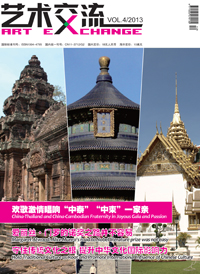
Hall of Private Audience

Interior of Hall of Priate Audience

Interior of Hall of Priate Audience
Red Fort is the first stop for my visit to India. In the evening, through the narrow passage of the old Delhi market, the towering rust-red walls of the Red Fort suddenly caught people's eyes, standing tall amid those lowrise buildings with uniqueness. Today, nearly 260 years after the demise of the Mughal Empire, the Islamic kingdom has long since ceased to flourish. Only the magnificent walls of the Red Fort remain intact against the cloudless sky.
Located in the northeastern part of the old city of Delhi and on the west bank of the Yamuna River, the Red Fort acquired the name due to the red sandstone made exclusively in India. After 11 years of rule in India, the fifth generation of the Mughal dynasty Shah Jahan decided to move to Delhi because his wife, Taj Mahal, died in the old capital of Agra, and built in the new capital the Red Fort based upon designing of the renowned Agra Fort. The construction of the Red Fort lasted nearly 10 years, which has mobilized the national manpower and material resources. It is the largest royal palace in India. The entire building is octagonal, and all pavilions are made of red sandstone and marbles without the use of a piece of wood or nails. Although it has been through hundreds of years, its glamor still shines.
The most magnificent building in Red Fort is the Lahore Gate to the west, named after the city of Lahore, Pakistan it faces, which is the birthplace of Shah Jahan. It was here that the British ousted the last ruler of the Mughal dynasty, marking the end of the Islamic dynasty that ruled India for more than 300 years; also here, on August 15th, 1947, as the first Prime Minister of India, Nehru announced the independence of the nation. And Lahore is almost a symbol of modern India.
Through the ramp behind Lahore Gate, you can see the outer palace of the Red Fort - the Hall of Public Audience, which consists of nine facades and three arches on each side, forming a rectangular pattern with three sides open except the inner wall. It is the hall where Shah Jahan used to meet the Indian officials and govern the regular issues. At the center of the inner wall of the palace, there is also a marble throne that Shah Jahan had sat in the past. The delicate flowers, birds, trees and other embosses on the throne tell the legend of the kingdom.
Walking from the left side of the Palace, there is known as the "paradise on earth" through a green lawn. The Hall of Priate Audience, the place where the monarchs and ministers discussed about national events, was built entirely of white marble. The overall structure of the whole palace is very similar to the palace of audience, but because of the different building materials, the former is beautiful and elegant, the latter magnificent with unique style.
To the north of the Hall of Private Audience is a three-roomconnected white marble palace, which is the king's bedroom, prayer room and conversation room. It is called "the heaven jewel of the Shah Jahan's harem". This palace is also the most mysterious one in the Red Fort. The gates are closed, and people can only peep inside from the white marble window sills. The courtyard behind them is desolate, and the dead wood and the cold stone seem to map the loneliness hidden in Shah Jahan 's robe.
Shah Jahan was probably very handsome from the portrait. His grandfather was the hero of the Akbar the Great, and his mother was a princess known for her bravery from the Rajput tribe. His bones were filled with the blood of the warriors. After a brutal power war, he defeated his brother in the battle for the throne, and renamed himself "Shah Jahan", "the ruler of the world" in Persian. He was 36 years old in his prime at that year. He loved horsing on the battlefield out of his natural military talent. He led his army south and north, the army of the Mughal dynasty expanded fourfold in just a few years. Perhaps as the fate favored him, he also won the most beautiful love in the world. In the Persian beauty Taj, he held the love of his whole life. Only Taj could understand the infinite tenderness of Shah Jahan. She was married to the king for 19 years and their love remained still fresh. When she died of dystocia, Shah Jahan built the world's most beautiful mausoleum, the Taj Mahal, and no longer touched other women.
His whole life of wars made Shah Jahan seriously sick, and several of his sons began to fight for power. Aurangzeb, son of Shah Jahan and Taj, finally took power, and imprisonod his father in a little house in Agra Fort, where, through the pane, he could see the Taj Mahal on the other side of the Yamna River. Shah Jahan, who once wanted to smash the world, was alone and pathetic in the last moment of his life, reminding of his great dreams which would never be realized. The strong ones grow old with so much regrets and shames, echoing the sayings "it's been a long time, my love".
Out of Shah Jahan's bedroom, facing the rough sandstone of the Red Fort, I can't help but think of his metaphor for the Red Fort - "like a veil of a beautiful woman." When he decided to construct this solid red façade, at that moment, was there ang warmth that touched the gentle corner of his heart? When he looked at the Taj Mahal in the distance from the window of Agra Fort, what mood was there? In the painful tortured soul, there might be a world that is unknown to the world, where there is hegemony, stifling, and infatuation. A palace wall conceals in thi's space the tenderness of its owner. Tourists come and go, and they have been admiring and peeking for so many years. Nowadays, the deepest part of Shah Jahan's palace is still closed, to protect the most intimate plale that is never revealed to the public. Every seemingly messy stone inscription on the top of the palace is a mystery that only he and Taj could understand, witnessing their warmth and expectation.
The tired bird hovered to the nests and the red fort would close at sunset. I walked out together with the other tourists. In the afterglow of the sunset, the solemn shades of the Red Fort were burning like a hot flame. For a moment, Shah Jahan's magnificent grandeur, brave battle, and heated emotion seem to emerge in this picture of dazzling red and calm white. The king rested, the war drums stopped, the sword was put into the sheath. When the lights were on,it seemed that the belle was already leaning against the marble pillar waiting for her love. Over the Red Fort in Delhi, the night had fallen.














